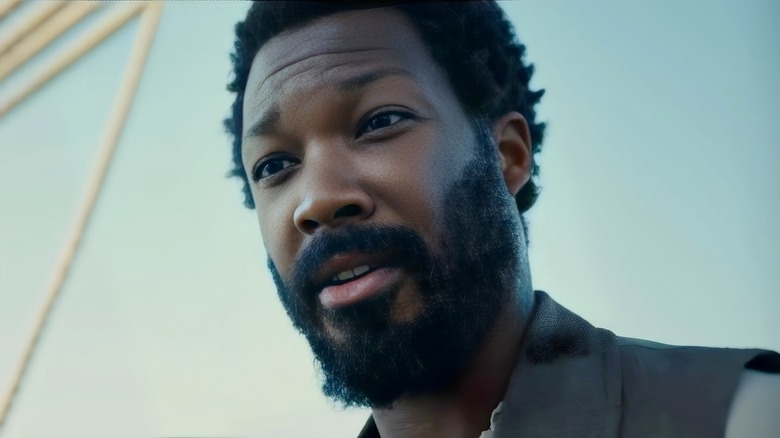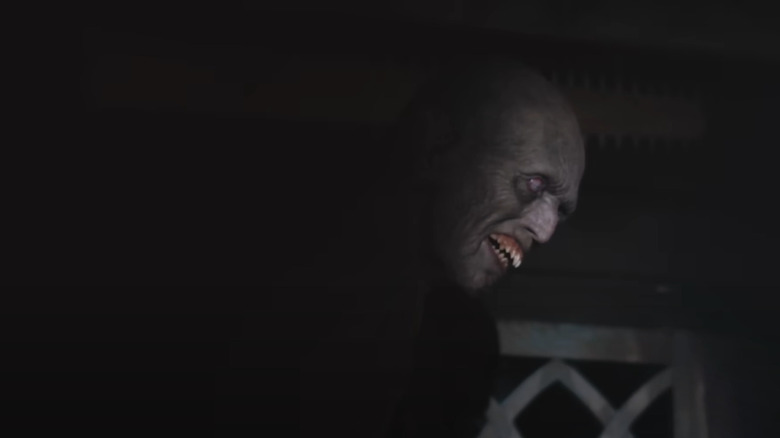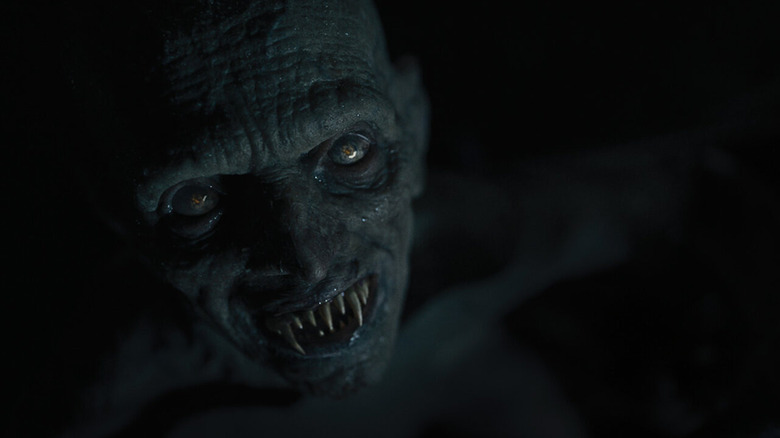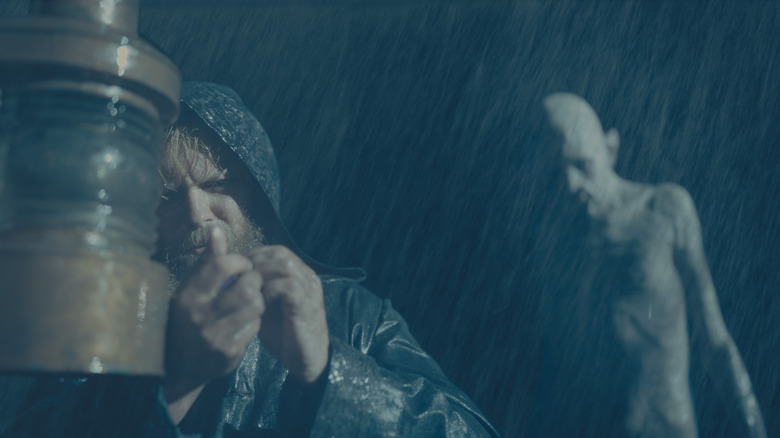The Last Voyage Of The Demeter: Every Change From Bram Stoker's Dracula You Missed
Contains spoilers for "The Last Voyage of the Demeter"
A new interpretation of Bram Stoker's seminal classic, "Dracula," is here, and it's unlike any other adaptation to date. This film specifically focuses on a single chapter from the 1897 novel — "The Captain's Log." It follows a doomed crew sailing from Transylvania to London, unknowingly harboring Dracula, played by Javier Botet, who emerges at night to wreak havoc and send the sailors into madness. While it's a single chapter of the main "Dracula" story, it's the main course here as the sailors are trapped at sea with a monster.
Of course, adapting one chapter into a two-hour film requires some alterations and additions. Several liberties were taken with the source material, particularly when it comes to the characters. As evidenced by the chapter's title, "The Captain's Log" is primarily formatted with dates and explanations of the strange occurrences that take place on the Demeter before it arrives in London. The characters are fleshed out, and some are added for greater dramatic flair. Most notably, Clemens (Corey Hawkins) is an original addition who comes aboard the ship as a doctor. He's the only one who makes it to London with Dracula. He may not be in the book, but the film sets him up to appear in future installments should they transpire.
Anna (Aisling Franciosi) is another original addition as the sole woman on the Demeter. She's an unwitting stowaway given to Dracula as a food source for the journey but eventually conspires with the crew to attempt to stop the vampire. But a few new characters aren't the only changes made from the source material.
Dracula doesn't die in sunlight in the novel
Even people who aren't intricately familiar with vampire lore know that they can't go out in sunlight, or they'll die. This manifests in "The Last Voyage of the Demeter," as Dracula only comes out at night. Additionally, those who fall under Dracula's spell after getting their blood sucked burst into flames when exposed to sunlight. However, this part of the mythology wasn't present in Bram Stoker's "Dracula."
In the 1897 novel, the sunlight weakens vampires and prevents them from shapeshifting, but they don't die outright. That particular weakness was introduced into pop culture thanks to the 1925 German expressionist film, "Nosferatu," a silent horror film that can still scare you. There's a scene where Count Orlok (Max Schreck) dies at dawn, which makes sense in a thematic sense. Vampires are dark, foreboding entities, so using sunlight as a weakness, in essence light overcoming darkness, works within this wheelhouse.
"Nosferatu" is an unofficial adaptation of "Dracula," but it definitely changes certain plot points. While sunlight didn't factor into the original novel, "The Last Voyage of the Demeter" takes a weakness everyone knows about from other films and brings it front and center.
Dracula was more man than monster in Bram Stoker's novel
Vampires have undergone numerous permutations in terms of appearance over the years. With Bela Lugosi in 1931's "Dracula," he's a suave-looking guy who happens to drain humans of their blood. Subsequent adaptations have occasionally portrayed vampires as pure beasts who seek out blood in the middle of the night. "The Last Voyage of the Demeter" opts for the latter category. Dracula speaks sometimes, but for the most part, he's a pale monster with wings and fangs who seeks out unsuspecting victims.
It's a far cry from how Bram Stoker wrote Dracula in the original novel, who's described as "A tall old man, clean shaven save for a long white moustache, and clad in black from head to foot, without a single speck of colour about him anywhere." The Dracula in "Demeter" certainly doesn't have a mustache, although he's notably taller than the rest of the crew. It's a far cry from Lugosi's version with slicked-back black hair.
This Dracula is a monster through and through who sports giant wings it uses to attack one crew member who tried to escape on a rowboat. It also uses its wings to engulf Anna at one point to prevent her from escaping. It may not be what Stoker had in mind, but it's downright terrifying on its own.
No dog emerges from the Demeter in the movie
"The Last Voyage of the Demeter" breaks a cardinal rule of filmmaking — don't kill the dog. When the ship first sets sail, the audience meets all the animals on board, including chickens and sheep. They wind up being the first victims of Dracula, and the dog also meets a horrendous fate. A dog also factors into Bram Stoker's "Dracula" but in a different manner.
In the novel, it's reported how a dog was the only thing to emerge from the Demeter wreckage: "But, strangest of all, the very instant the shore was touched, an immense dog sprang up on deck from below, as if shot up by the concussion, and running forward, jumped from the bow on the sand." The dog was never found, so the implication is that Dracula shape-shifted into a dog to make its way into London. While most people assume vampires can turn into bats, the original novel established how Dracula could turn into other things, including mist and a dog.
A dog springing forth from the ship doesn't happen in the movie. Instead, we simply see Clemens, as the only survivor, make his way through London, obviously not done with Dracula just yet. In fact, Dracula doesn't turn into anything throughout the film, always assuming his monstrous form. It's possible a sequel could showcase some more of the creature's powers, but he's plenty formidable, as depicted in "The Last Voyage of the Demeter," playing in theaters now.



